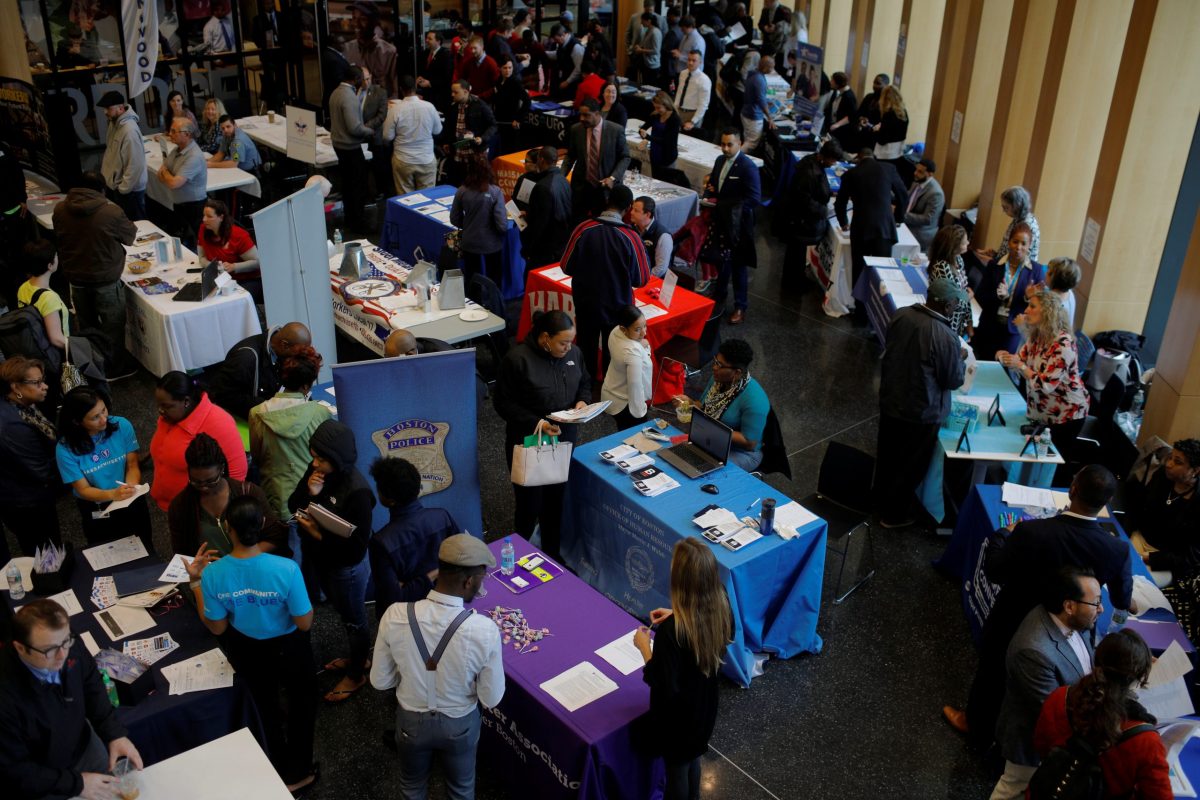BY LUCIA MUTIKANI
The number of Americans filing claims for unemployment benefits surged to a record of more than 3 million last week as strict measures to contain the coronavirus pandemic brought the country to a sudden halt, unleashing a wave of layoffs that likely ended the longest employment boom in U.S. history.
The weekly jobless claims report from the Labor Department on Thursday offered the clearest evidence yet of the coronavirus’ devastating impact on the economy, which has forced the Federal Reserve to take extraordinary steps and the U.S. Congress to assemble a record $2 trillion stimulus package.
Economists say the economy is already in recession. Weekly claims are the most timely labor market indicator. With nearly half the country’s population under some form of a lockdown and reports of state employment websites overwhelmed, economists are bracing for further increases in jobless claims.
“With partial lockdowns across the country leading to a sudden stop in economic activity, the U.S. economy will experience the largest economic contraction on record with the most severe surge in unemployment ever,” said Gregory Daco, chief U.S. economist at Oxford Economics in New York.
“We expect jobless claims will continue to climb as more economic activity shuts down.”
Initial claims for unemployment benefits rose 3.00 million to a seasonally adjusted 3.28 million in the week ending March 21, eclipsing the previous record of 695,000 set in 1982, the Labor Department said. That also dwarfed the peak of 665,000 in applications during the 2007-2009 recession, during which 8.7 million jobs were lost.
Economists polled by Reuters had forecast claims would rise to 1 million, though estimates were as high as 4 million.
The Labor Department attributed the surge to COVID-19, the respiratory illness caused by the coronavirus. A running tally kept by Johns Hopkins University showed that at least 1,046 people in the country have died from COVID-19.
“This large increase in unemployment claims was not unexpected, and results from the recognition by Americans across the country that we have had to temporarily halt certain activities in order to defeat the coronavirus,” U.S. Labor Secretary Eugene Scalia said in a statement.
Layoffs were concentrated in the accommodation and food service, health care and social assistance, arts, entertainment and recreation, transportation and warehousing, and manufacturing industries.
Mounting job cuts and a sinking economy have prompted President Donald Trump, who is running for re-election in November, to push for businesses to reopen by Easter, which is April 12. With infections and the death toll rising, many health experts, economists and politicians have argued against such a move.
Fed Chair Jerome Powell said on Thursday in an interview on NBC’s “Today” show that the economy “may well be in recession” but progress in controlling the spread of the coronavirus will dictate when the economy can fully reopen.
Recessions in the United States are called by the National Bureau of Economic Research. The NBER does not define a recession as two consecutive quarters of decline in real gross domestic product, as is the rule of thumb in many countries. Instead, it looks for a drop in economic activity, spread across the economy and lasting more than a few months.
The economy grew at a 2.1% annualized rate in the fourth quarter, the Commerce Department confirmed in another report on Thursday. The department also reported a 9.1% plunge in the goods trade deficit to $59.9 billion in February, as well as declines in wholesale and retail inventories, as the coronavirus helped to depressed imports.
Stocks on Wall Street were trading higher, with expectations rising that the record jump in unemployment benefits would spur additional fiscal relief. The dollar <.DXY> fell against a basket of currencies, while prices of U.S. Treasuries rose.
(Graphic: Unemployment benefits claims hit all-time high, https://fingfx.thomsonreuters.com/gfx/mkt/13/3979/3935/Pasted%20Image.jpg)
PAYROLLS SEEN DECLINING
The pandemic has prompted governors in at least 18 states to order residents to stay mostly indoors. “Non-essential” businesses have also been ordered closed. According to economists, a fifth of the workforce is on some form of lockdown.
The historic fiscal stimulus package, which is now before the U.S. House of Representatives, would increase payments for the unemployed by up to $600 per week per worker, and laid-off workers would get those payments for up to four months. Regular benefits, which typically run out after six months in most states, would be extended for an additional 13 weeks.
Unadjusted claims for California and Washington state, Ohio, New Jersey, Illinois, Texas and Massachusetts increased by more than 100,000 last week. Pennsylvania reported unadjusted claims increased more than 300,000.
Last week’s claims data likely will have no impact on March’s employment report as it falls outside the period during which the government surveyed employers for nonfarm payrolls, which was the week ended March 14.
Still, the unprecedented surge in jobless claims likely signals a record streak of 113 months of U.S. employment growth, dating to October 2010, came to an end this month.
“Jobs will decline in March,” said Mark Zandi, chief economist at Moody’s Analytics in West Chester, Pennsylvania. “There are numerous reports of laid-off workers unable to file for unemployment insurance because so many people are trying to file at the same time. Millions of job losses are likely in coming weeks.”
(Graphic: End of a historic jobs boom, https://fingfx.thomsonreuters.com/gfx/mkt/13/3982/3938/Pasted%20Image.jpg)
Thursday’s claims report also showed the number of people receiving benefits after an initial week of aid increased 101,000 to 1.80 million for the week ended March 14, the highest since April 2018.
The so-called continuing claims data covered the period during which the government surveyed households for March’s unemployment rate. Continuing claims increased 110,000 between the February and March survey week, suggesting the unemployment rate will probably rise this month from the current 3.5%.
“We would be amazed if it didn’t exceed 10% by May, if not April,” said Paul Ashworth, chief U.S. economist at Capital Economics in Toronto. “The unemployment rate could remain elevated for years.”



































